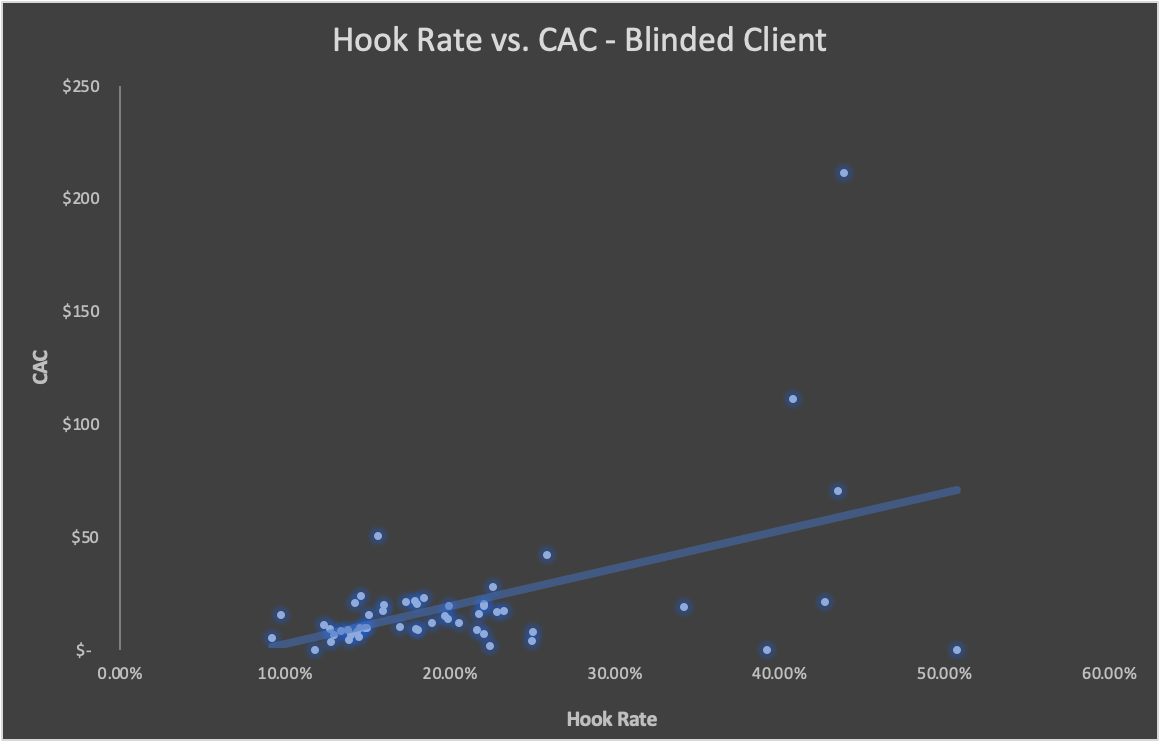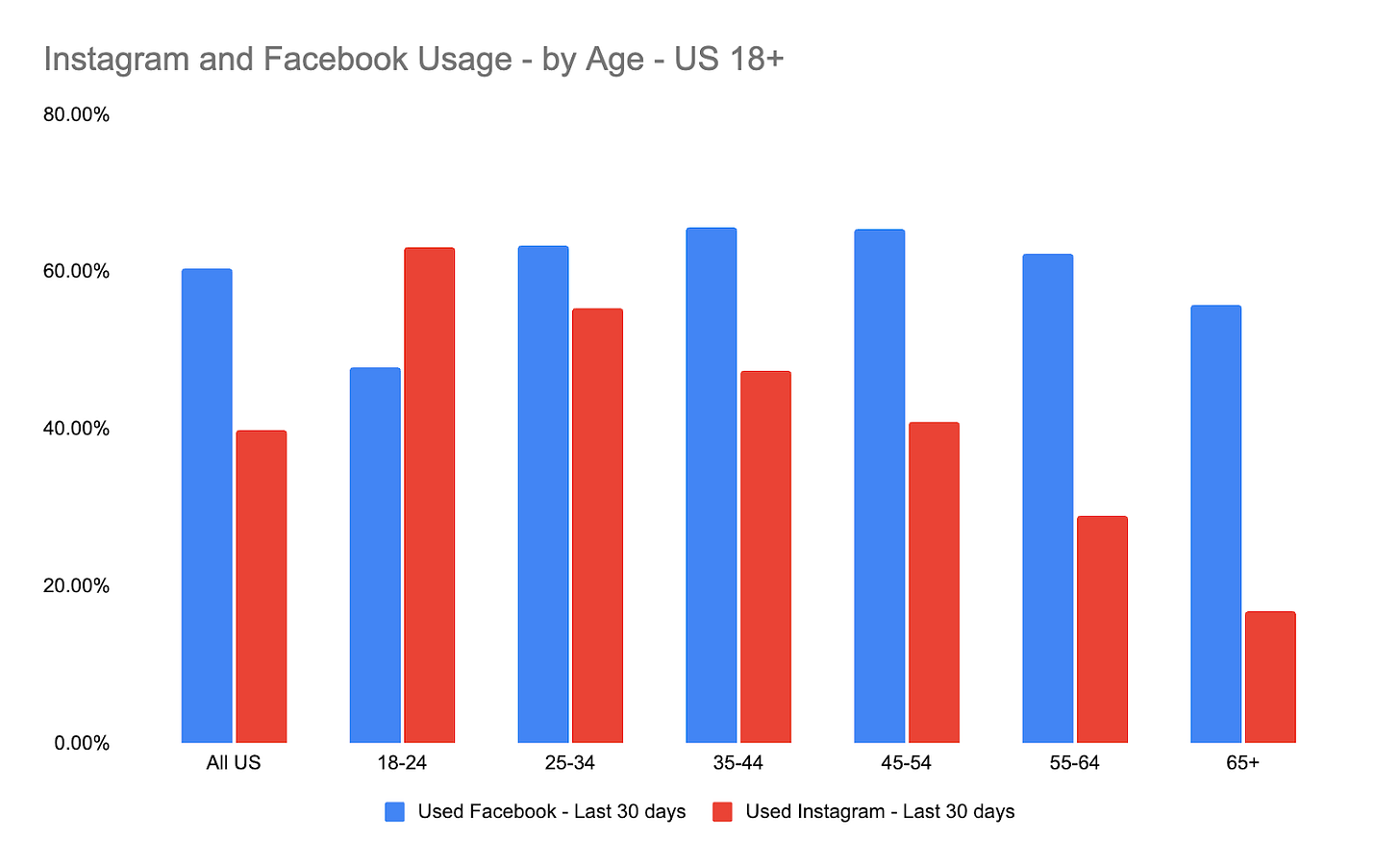Performance Marketing Reboot - 1.29.25
A Marketing Newsletter for Performance Marketers Converting to Marketers™
Hi folks,
What a time to be a human being, especially a human being in digital marketing. The entire landscape seems to shift under our feet every week (TikTok ban, Meta moderation & org changes, DeepSeek). But we’re going to talk very little about those things in this week’s newsletter. One because I am a bit tired of talking about them and two because I’m sure you are tired of reading about them.
However, I will make a very quick plug that if you are interested in our New Engen POV on the changes at Meta specifically, I’d be happy to share that with you. Just send me a message.
Onto the meat and potatoes…
Highlights:
How to evolve your thinking about Hook Rate
The limitations of A/B testing in platforms like Meta
Young people use Meta but a lot of people don’t believe it (!!)
What Google’s latest PMAX update (more controls) means for marketers
Test I Like:
As a “performance marketer” in origin, I’ve long chased proxies - those easy-to-measure and loosely-correlated-with performance KPI’s that give you something to pursue, and improve. In my early days in email marketing at zulily, we spent a lot of time analyzing open rates and click through rates. We were sending 20+ million emails every day, and small improvements in these engagement metrics felt meaningful.
At one point, we were consistently running daily 16+ variant subject line tests. We quickly learned that open rate had very little connection to revenue. Sometimes it did, but there were almost always other factors at play (a flagship brand for sale) that drove high open rate AND strong revenue. As such, all of our experimentation still focused on revenue and we largely ignored open rate. Great subject lines ultimately had a HUGE impact on revenue (+5-10%) - open rate did not.
Ok everyone likely knows this, so why am I telling you about open rates?
The proxy of the moment for performance marketers is a very close equivalent to Open Rate. “Hook Rate” (3 second video views/total impressions) as a measure spiked in popularity with the rise of video and zero click behavior. On a more psychological level, content overload and lower attention spans have forced greater emphasis on quickly grabbing people’s attention before they swipe away. Hook rate has quickly become the creative strategy focal point for many growth marketers.
The challenge with hook rate is, as an independent variable, it is entirely unpredictive of performance. Our client data proves this - below is a blinded client example where the correlation is actually negative:
Of the 15 clients we looked at, basic correlation analysis produced the following breakdown:
Positive correlation: 3 clients
Negative correlation: 6 clients
No correlation: 6 clients
When you start optimizing to hook rate, you risk focusing on attention-grabbing intros that may have nothing to do with your brand/product or do not work to change people’s behaviors. Attention is not meaningless. In fact it’s incredibly important in this day and age (see interview link at bottom of newsletter). But attention without attraction & connection is generally worthless. Marketers must strive to create ads that do BOTH.
I would argue there are three types of ads:
Dull ads - ads that do nothing
Attention Driving ads - ads that get our attention
Attraction & Connection Driving ads - ads that get us to care
Prioritizing hook rate alone takes us to #2. But we need to aspire for #3.
Since we all love a good proxy, how can you start to adapt:
Continue to test your hooks, but don’t optimize to hook rate
Build a report that showcases your creative with a strong hook AND strong business outcome. Iterate & optimize around these hooks and concepts.
Build a report that showcases your creative with a strong hook AND poor business outcome. Stop doing this or at a minimum seek to understand why the disconnect is happening.
100% or 75% watch rate seems to more positively correlate with effectiveness - begin reporting on this.
Post I Like:
Journal of Marketing challenges the accuracy of A/B testing on digital ad platforms.
I think this should be obvious to anyone with deep experience managing these platforms. The algorithmic nature of a platform like Meta means that delivery of ads is highly variable based on creative, and other inputs. Thus, you cannot run a true A/B split test.
So should you stop running A/B tests on these platforms entirely? Not necessarily. They can still generate directional insights. I recommend you specifically test for multiple standard deviation outcomes. While imperfect from a data science perspective, the larger the effect, the higher likelihood you have actually found a real winning treatment. This would mean A/B testing a green vs. red CTA on your creative is likely a waste of time, but testing a new customer offer vs. no offer is worth it. For more precise testing (say branding, pricing etc) I would recommend using your site or email. Testing is ALWAYS a good thing, it’s mostly about how literally you take the results and how you extrapolate them.
This, of course, excludes incrementality/lift experiments. A topic for another day.
Macro Observations:
If you follow me on LinkedIn, you’ve seen me spend a good bit of time analyzing what happened on Meta when TikTok went dark.
The Highlights:
Users did in fact flock to meta - impressions spiked across the platform, and most specifically on reels
Young People saw a large jump in meta usage - we saw a 61% spike in impressions for the 18-24 age bucket.
With the likelihood of a permament ban decreasing by the day, this data is becoming more “interesting” than valuable. Additionally, these reactionary shifts are not necessarily reflective of what long term behavior might look like in the case of a permament ban. However, I believe this is still valuable intel to have in your back pocket for contingency planning over the next ~65 days.
Which brings us to another key topic. This data has sparked a lot of pushback from marketing professionals, with the most common trope being “Young people obviously don’t use Meta”.
But they do…with >60% of Americans 18-24 using Instagram in the last 30 days.
source: MRI-Simmons, Fall 2024 Survey
When I share the above data, people are then quick to say “well, young people may open the apps but they don’t spend any time on the platform”.
But they do…spending on average 40-45 minutes/day on instagram alone. Yes, TikTok garners a much larger share of time, but few media channels trump Instagram (and Meta) for this demo.
source: emarketer
I’ll admit, some of this usage by young people is likely a function of the mass reach and ubiquity of meta (>90% penetration in the US). In other words, its hard NOT to be on it, even if its not their preferred platform. Regardless, it’s important to follow the data and perform proper research and media planning to understand who uses what platforms, how & how much, and what they care about. Your algorithm or the headlines may be lying to you (read: they are).
Reading:
A Growing Body of “research” challenging the independent value of “hook rate”: additional support of the hook rate write-up above.
More controls are coming to Google’s PMAX: a nice follow up to my PMAX write-up about how our teams at New Engen adopted and then shifted away from PMAX. The original PMAX took away all control - we are slowly inching back to a place where marketers will have many of the same controls as they did before. I take this as further admission that PMAX is not ready to be and may not be the flagship product it appeared to be 3 years ago. AI/Automation are rapidly changing how we buy media, but it’s starting to feel like we are still a ways away from complete automation. Any great media buyer knows the nuance and complexity of management still exists, and while they may not be managing KW level CPC bids every day, the focus has just shifted elsewhere.
The power of attention, as told by Chris Hayes and Ezra Klein: “Attention” has received a lot of attention lately, but I have yet to see a discussion this deep and insightful. The discussion focuses primarily on politics, but the broader lessons are critical for marketers. The most challenging question I had coming out of this was: as a brand, how do you win attention NOW, but also sustain over time? Often, short and long term attention are at odds with each other, and the closest non-political proxy for brands is how to react to viral trends. Much to ponder. (Audio also available via spotify, apple podcasts etc).
Our latest, high-level research on AI platform usage: This pre-dates all of the DeepSeek hoopla, although I don’t expect a major change in platform usage for casual AI users. While I think it’s quite obvious 2025 appears to be an inflection year for mainstream AI adoption and utility (i.e. agents), I also think traditional search is setup for massive change this year. Slowly and then all at once, as Hemmingway famously wrote.
thanks for reading,
Kevin








